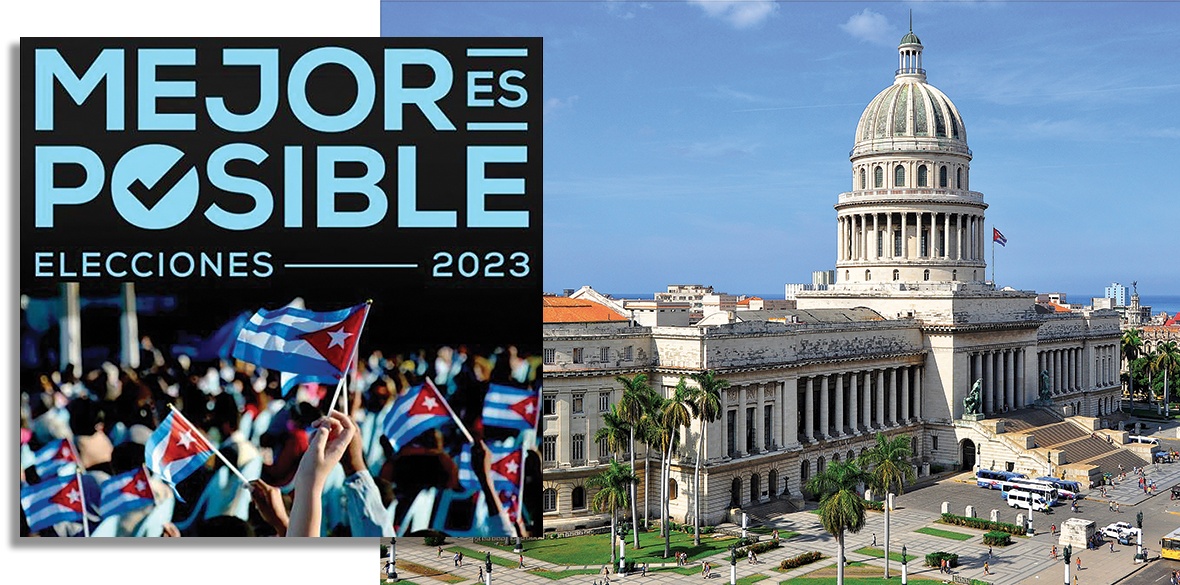This is the last article you can read this month
You can read more article this month
You can read more articles this month
Sorry your limit is up for this month
Reset on:
Please help support the Morning Star by subscribing here
THIS month, 470 deputies will be elected to Cuba’s National Assembly of People’s Power – the country’s highest political body – for a five-year term. These elections will see record participation of young, black and women candidates.
Cuban election campaigns are not about individual media promotion as in capitalist countries. There are no smiling faces on billboards in the streets, no advertising full of promises.
In the weeks leading up to the elections, the candidates visit neighbourhoods, workplaces, and student centres, where assemblies are organised to exchange views and consultation with the population.
In these public meetings, the candidates for the Cuban parliament talk to the voters and listen to their concerns, questions, complaints and proposals.
One fifth of all candidates are young people between the ages of 18 and 35. This represents an major decrease of average age when compared to the current legislature.
More than half of the candidates are women. The world average for women’s participation in national government — according to the World Economic Forum — is only 26 per dent.
Rwanda, with 61 per cent of the members of its parliament being women, has the highest rate of female participation.
At the same time, while in the previous Cuban legislature 40 cent of members were black, the number of black candidates has increased to 45 per cent.
“Political power in Cuba resides in the National Assembly of People’s Power. This is the highest organ of power in the Cuban state, from which different functions are delegated to other organs that make up the structure of the Cuban state.
“Therefore, the National Assembly of People’s Power has constituent and legislative functions. Its deputies are elected directly by the people. The president, vice-president and secretary of the assembly are elected by the assembly itself,” explained lawyer Loyet Ricardo in an interview with Brasil de Fato (Brazil in Fact).
Unlike multi-party political systems, candidates for the Cuban legislature are not elected through competition between different political parties.
Contrary to what is often believed, it is not the Cuban Communist Party that chooses the candidates for the assembly either. The candidacies are chosen by “candidacy committees.”
The candidacy committees are made up of representatives of the leaderships of different sectoral and union spaces, which in turn are made up of members of the Federation of University Students, the Workers’ Central Union of Cuba, the National Association of Small Farmers, the Federation of High School Students, the Federation of Cuban Women, and the Committees in Defence of the Revolution. These committees propose different candidates who will be voted on in the elections.
The elected representatives are not paid a salary higher than that of the average worker. Likewise, officials are required by law to be accountable to their constituents and their mandate can be revoked at any time.
“In Cuba, democracy is not just participation in the voting, but also the exercise of the right of the people to control the actual exercise of that power.
“It is in the capacity of being part of the decision-making process, of being able to demand that the state is responsible for its management and for satisfying the needs and demands of the population,” Ricardo said.
Cuba is currently facing a serious economic crisis that has produced a social malaise that manifests itself in many ways. One of them has been a political detachment that has led to a decrease in political and electoral participation.
Between 1976 — the year in which the first constitution was approved after the triumph of the revolution in 1959 — and 2010, the electoral participation rate ranged between 95.2-95.9 per cent of voters. This put the voter turnout level at well above that of most countries.
In the following years, although the level of voter turnout in Cuba suffered a slight decline, it remained at high levels. In the 2015 elections, turnout rates were 89 and, and in the 2017 municipal elections, abstention was 14 per cent.
However, in the elections for delegates to the National Assembly of People’s Power held in 2022, abstention rose sharply, reaching 31.5 per cent of the total number of voters.
This figure — although normal by most countries’ standards — was the highest abstention rate in the history of Cuban elections since the triumph of the revolution.
This article was originally published in Portuguese in Brasil de Fato.










